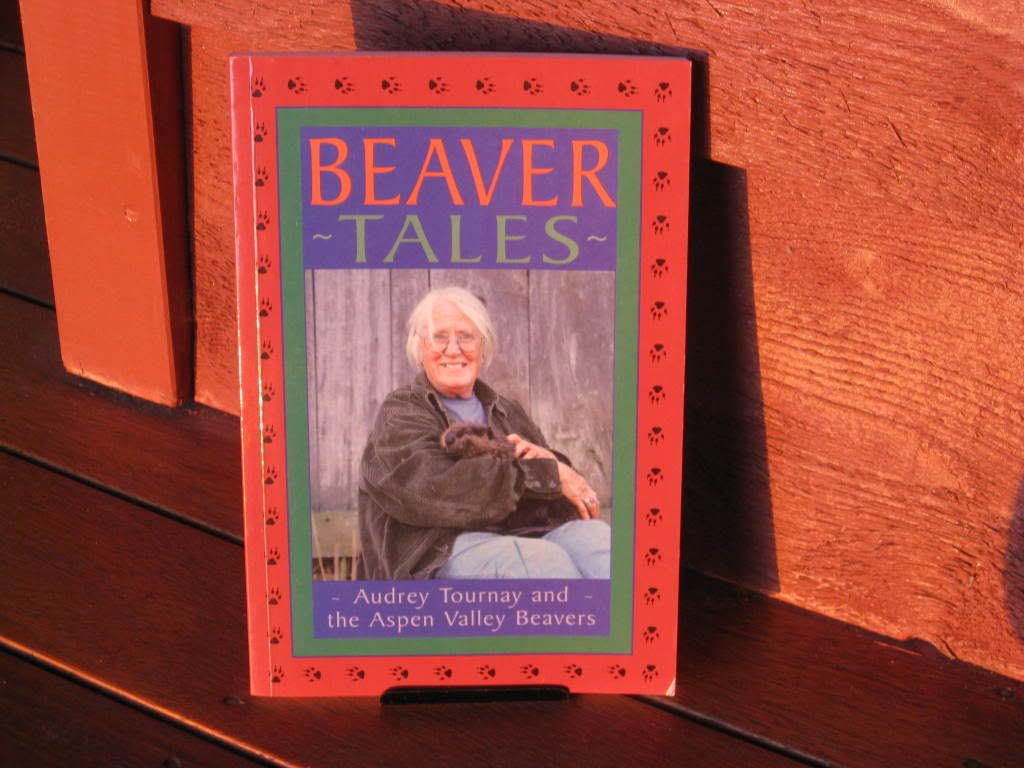Chip Ward’s article is marching through the liberal hemisphere – now on Salon and Axis of logic. I’m very thrilled for the promotion but I sure hope it gets picked up by a conservative website soon. We don’t want liberals to be FOR beavers. Because then of course conservatives will be AGAINST them. Let’s emphasize their money-saving, small business owner expertise and get them on National Review Online or Red State soon!
On Axis of logic the editor offered these remarks:
Editor’s Commentary:
Timber is a Canadian beaver. That might not be his real name, but it’s what we call him nonetheless – and he responds to it. Timber was orphaned and successfully raised by a friend of mine, Michele.
It was once thought by scientists that beavers orphaned at a young age could not survive because of the intense family structure of these critters, and the fact an orphan would be shunned by other beaver families. We learned through another friend, Audrey Tournay, that this is untrue. Audrey is renowned worldwide for defying the biologists and showing that beavers can indeed survive and thrive with human nurturing.
Timber became one of the stars of two television programs.
I am in the process of working with Michele to write Timber’s biography and it should be ready later this year (I’m the writer, she’s the story teller – the tentative title is Beavers Never Read the Operating Manual). It will be a book aimed at encouraging young people to learn about, and develop a concern for, the environment all around them. It is not yet too late to save ourselves from ourselves, but we’ll need to engage young people to do it.
– prh, Editor
I’ll look forward to the Timber-files soon. I loved  Audrey Tournay’s beaver tales (Audrey was the founder of the Aspen Valley Wildlife Sanctuary where Michelle Grant worked) and I know you did too. In the mean time, two behind the scenes reveals are that the editor PRH is actually Paul Richard Harris who is the husband of Debbie Harris who we helped with beavers in Ontario way back in 2012, (because it’s a very small beaver world and all roads lead to Martinez).
Audrey Tournay’s beaver tales (Audrey was the founder of the Aspen Valley Wildlife Sanctuary where Michelle Grant worked) and I know you did too. In the mean time, two behind the scenes reveals are that the editor PRH is actually Paul Richard Harris who is the husband of Debbie Harris who we helped with beavers in Ontario way back in 2012, (because it’s a very small beaver world and all roads lead to Martinez).
And btw his original editor’s note credited David Suzuki for the documentary and didn’t mention Jari, which I replied to. So this old comment
Timber became one of the stars of two television programs. One, here in Canada, was a David Suzuki produced program called The Beaver Whisperers. The second was produced in the United States by PBS and is called Leave It To Beavers. Go find them: they are both fascinating.
Got magically edited into this one:
One, here in Canada, was a program aired on CBC called The Beaver Whisperers. The second aired in the United States on PBS and is called Leave It To Beavers. Go find them: they are both fascinating. Both documentaries are produced by Jari Osborne.
Which is a kind of reminder that one can make a difference in this topsy turvy beaver world, if you needed one. I myself made a snippet of difference last night on channel 7, but was disappointed my “amazing” interview in the blazing sun was shortened to 15 seconds. Still, its a great plug for the festival anyway, and they snagged tuesday’s footage, gave us credit, got our name right and linked to the right page of the website so I’m very happy.
MARTINEZ, Calif. (KGO) —
The famous beaver family in Martinez is still at it and now officials say they’re actually good for the drought.
Experts say the beaver dams are helping water stay in the creek year round, despite the drought and that’s helping preserve fish and other wildlife.
The group “Worth A Dam” is dedicated to maintaining the beavers in Alhambra Creek.
The president and founder of the group, Heidi Perryman, Ph.D., says, “They’re kind of doing a restoration job for the town of Martinez. They working 24/7. And they’re doing it for free.”
A “Beaver Festival” is planned for this Saturday. It’s taking place from 11 a.m. to 4 p.m. at Marina Vista and Alhambra Avenue in Martinez.
‘A’ Beaver festival? A? Not THE beaver festival? I guess we should be proud of the fact that there are now SO many beaver festivals in the world we don’t merit the definite article anymore. Hrmph!







































